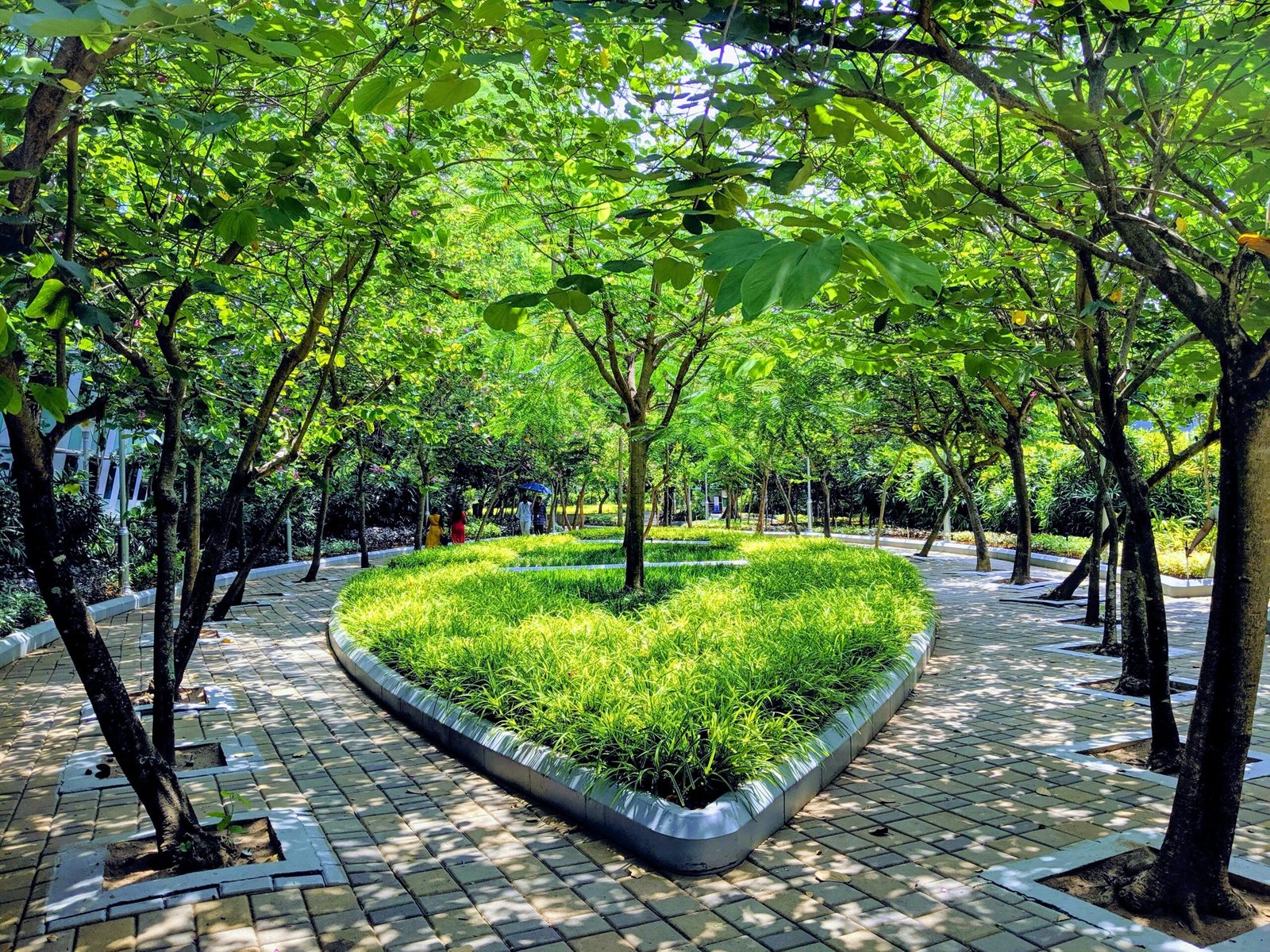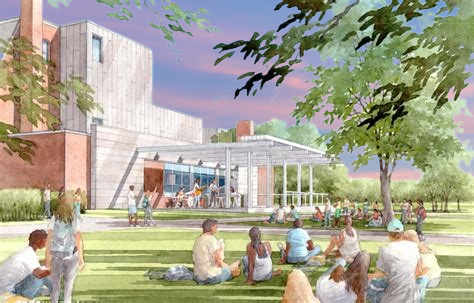Green campuses are educational institutions that actively incorporate sustainable practices into their operations and design. This concept encompasses a wide range of eco-friendly initiatives aimed at promoting environmental stewardship while enhancing the overall well-being of students and staff. A defining characteristic of green campuses is their commitment to integrating nature within their environments, which can significantly impact students’ health and academic performance.
One of the fundamental components of a green campus is the presence of green buildings. These structures are designed with materials and technologies that minimize resource consumption and environmental impact. Energy-efficient systems, such as improved insulation, energy-saving HVAC systems, and the use of natural light, are often prevalent. Additionally, many green campuses employ renewable energy sources, such as solar panels and wind turbines, to power their facilities and reduce carbon footprints.
Tree planting initiatives and the maintenance of green spaces are also key elements of a green campus. These spaces not only enhance the aesthetic appeal of the campus but also provide areas for relaxation and outdoor activities, promoting physical health and mental well-being among students. Furthermore, the strategic placement of trees can improve air quality, thereby contributing to a healthier environment on campus. Alongside these features, eco-friendly transportation options, including bike-sharing programs, electric vehicle charging stations, and walkable pathways, play a significant role in reducing the carbon emissions associated with campus commuting.
By fostering a robust sense of community among students through shared green spaces and sustainable practices, green campuses create an inclusive atmosphere where individuals can thrive academically and socially. The integration of nature in educational institutions not only serves aesthetic purposes but also plays a vital role in enhancing the overall student experience. This holistic approach emphasizes the importance of sustainability in shaping educational environments for future generations.
Impact of Green Campuses on Student Health

Green campuses play a significant role in enhancing student health and well-being, presenting numerous benefits that contribute to both physical and mental well-being. Research has consistently shown that access to greenery and outdoor spaces can improve air quality, which is essential for maintaining optimal respiratory health among students. Enhanced air quality is often linked to better overall health outcomes, reducing the incidence of respiratory-related illnesses among the campus population.
Additionally, green campuses encourage increased physical activity. Open green spaces, walking trails, and recreational areas promote outdoor engagement, compelling students to participate in activities such as walking, jogging, or playing sports. Studies have found that students who are more physically active tend to report higher levels of energy, improved mood, and better concentration abilities. These benefits can, in turn, translate into improved academic performance, providing an academic edge to those who frequently utilize campus green areas.
Moreover, the presence of nature has been evidenced to reduce stress levels among students. Engaging with outdoor environments can provide a sense of relief and tranquility, which is particularly important in environments often characterized by high-pressure academic demands. Research indicates that even brief interactions with nature, such as lounging in a garden or taking a hike, can significantly lower stress and anxiety levels. These effects contribute to a more supportive and peaceful campus atmosphere.
Ultimately, green campuses facilitate better academic performance and overall well-being. Access to plants and natural landscapes not only enriches student life but also fosters an environment where students can thrive mentally and physically. In considering these numerous benefits, it becomes evident that cultivating green spaces on campuses is essential for crafting a healthier and happier student community.
Psychological Benefits of Nature in Education

The psychological impact of nature on individuals, particularly students, is well-documented and significant. Green campuses that prioritize natural elements not only enhance aesthetic appeal but also contribute to improved student well-being through various psychological mechanisms. One key concept in this domain is biophilia, which suggests that humans possess an innate connection to nature. This connection can foster a sense of belonging and safety, essential components for a conducive learning environment.
Research indicates that exposure to greenery can lead to increased feelings of tranquility. Natural settings have been shown to reduce stress and anxiety levels among students. In the high-pressure environment of educational institutions, where academic demands often lead to heightened stress, the presence of trees, gardens, and open spaces provides a vital counterbalance. By incorporating outdoor study areas and recreational spaces, green campuses can create restorative environments that encourage relaxation and rejuvenation.
Enhanced cognitive function is another significant benefit linked to exposure to natural environments. Studies have demonstrated that nature can improve concentration, memory retention, and problem-solving skills. This is particularly crucial in academic settings where attention and creativity are paramount. A green campus can inspire students to engage more deeply with their studies, resulting in higher levels of academic achievement. The stimulating effects of nature on cognitive performance make it a valuable asset for educational institutions aiming to foster an environment conducive to learning.
Furthermore, the integration of nature promotes social interaction and collaboration among students. Green spaces often serve as communal areas where students gather, share ideas, and engage in cooperative learning activities. This social aspect is essential for mental health, as connections with peers can alleviate feelings of isolation and enhance overall well-being.
In conclusion, the psychological benefits of a green campus environment are multifaceted. By supporting mental health, reducing anxiety, enhancing cognitive abilities, and fostering social connections, the inclusion of natural elements in educational settings plays a vital role in improving student well-being and academic success.
Moving Towards a Greener Campus: Strategies for Implementation

As educational institutions increasingly recognize the importance of sustainability, it is essential to establish actionable strategies that promote green initiatives. One of the first steps is to develop a comprehensive plan for sustainable landscaping. This involves selecting native plants that require minimal water and maintenance while enhancing biodiversity on campus. By integrating green spaces such as community gardens, educational outdoor classrooms, and recreational areas, institutions can create an environment that fosters both ecological health and student well-being.
Energy-efficient buildings offer another significant opportunity to enhance a campus’s sustainability. Educational institutions should consider retrofitting existing structures with energy-efficient technologies, such as LED lighting, smart HVAC systems, and solar panels, to reduce their carbon footprint. New constructions should adhere to green building standards, such as LEED certification, ensuring that they meet sustainability benchmarks and are built with eco-friendly materials.
Incorporating education about sustainability into institutional curricula is crucial for fostering a culture of environmental responsibility. This can be achieved by offering interdisciplinary courses that cover topics such as renewable energy, sustainable agriculture, and environmental policy. Additionally, institutions can create workshops and seminars to engage students and faculty in discussions about the importance of sustainability in their daily lives and future careers.
Successful case studies can provide invaluable insights for institutions striving to enhance their green initiatives. For instance, the University of California, Davis, has implemented an integrated sustainability program that emphasizes energy efficiency, waste reduction, and transportation alternatives. Their efforts have resulted in a notable decrease in greenhouse gas emissions and have increased student involvement in sustainability initiatives. Similarly, the University of Massachusetts Amherst has focused on sustainable dining practices, sourcing local food, and reducing food waste, thereby improving both its environmental impact and student health.
In conclusion, by implementing these dynamic strategies, educational institutions can contribute to a greener campus and enhance the well-being of their students, ultimately creating a more sustainable future for all.



